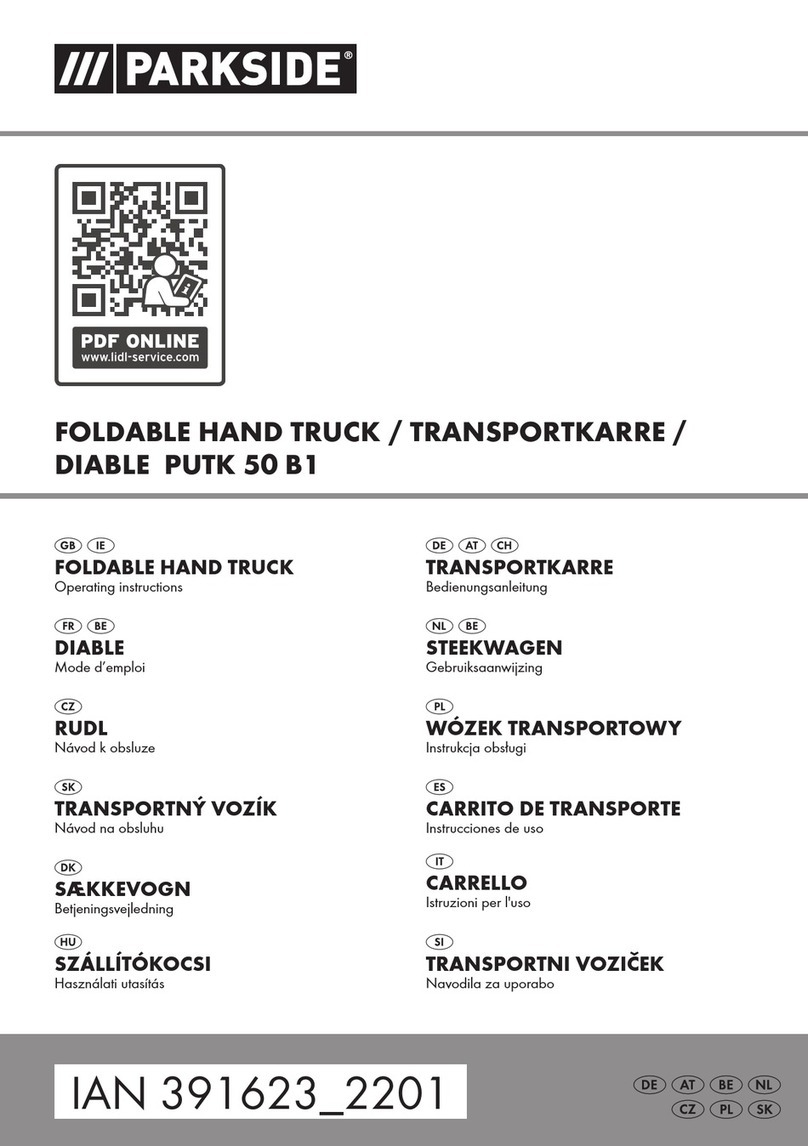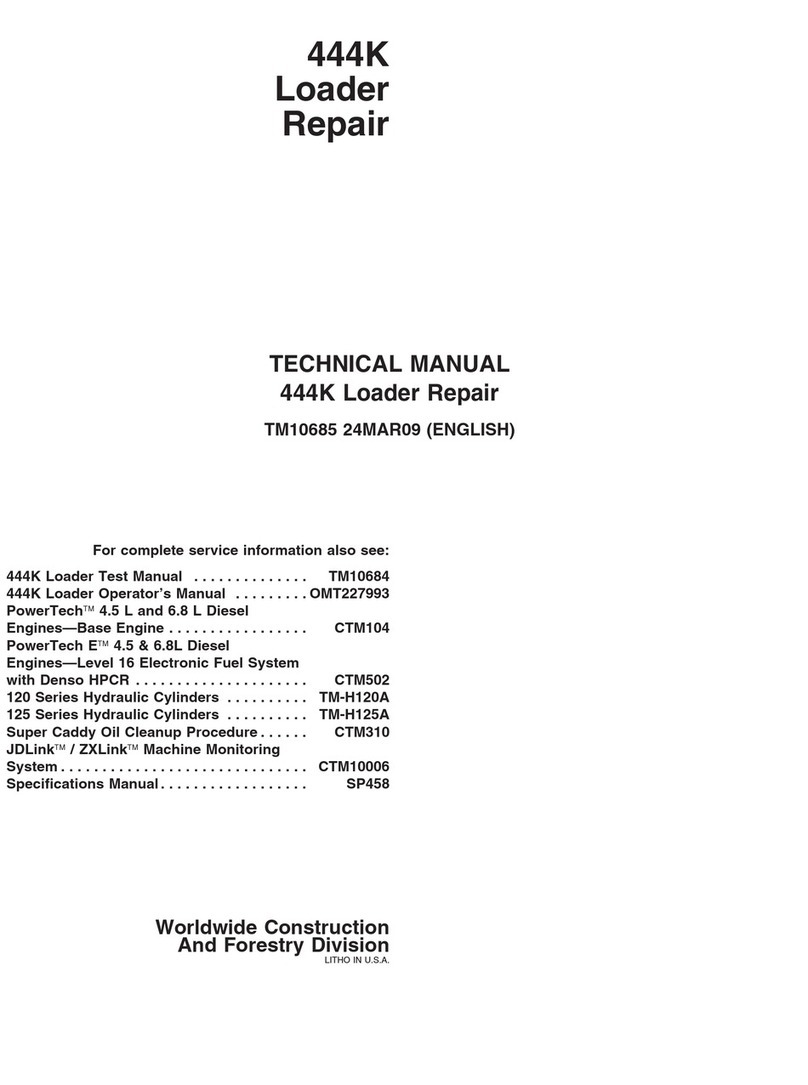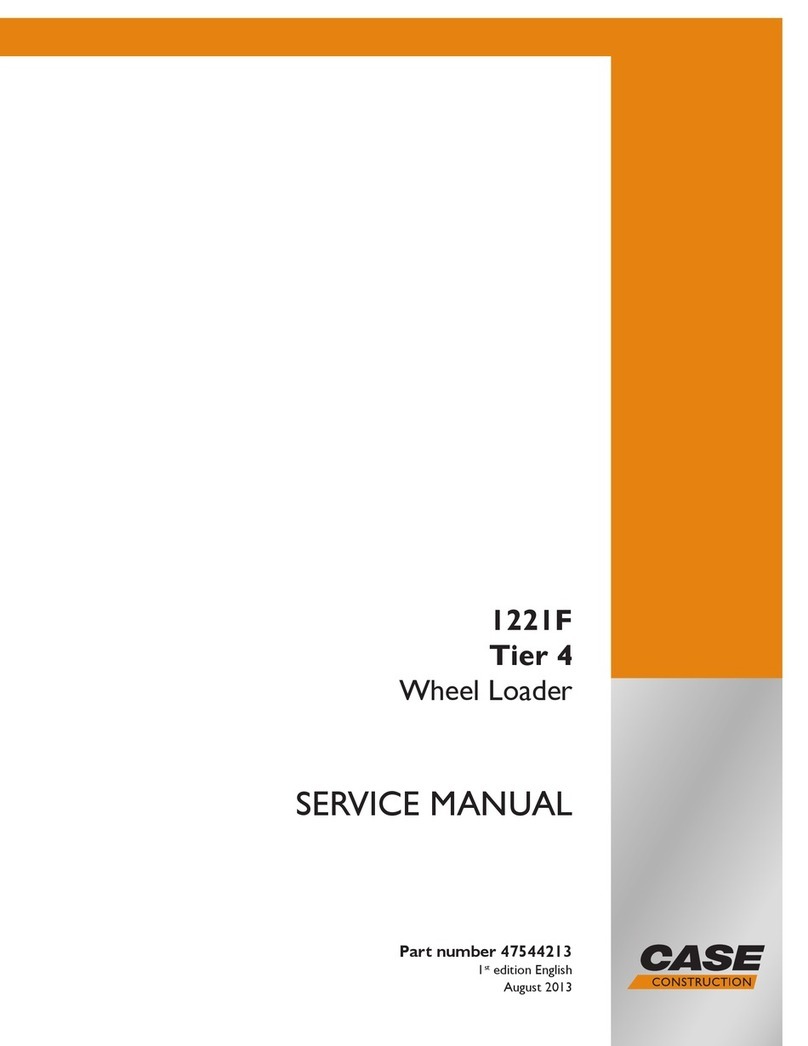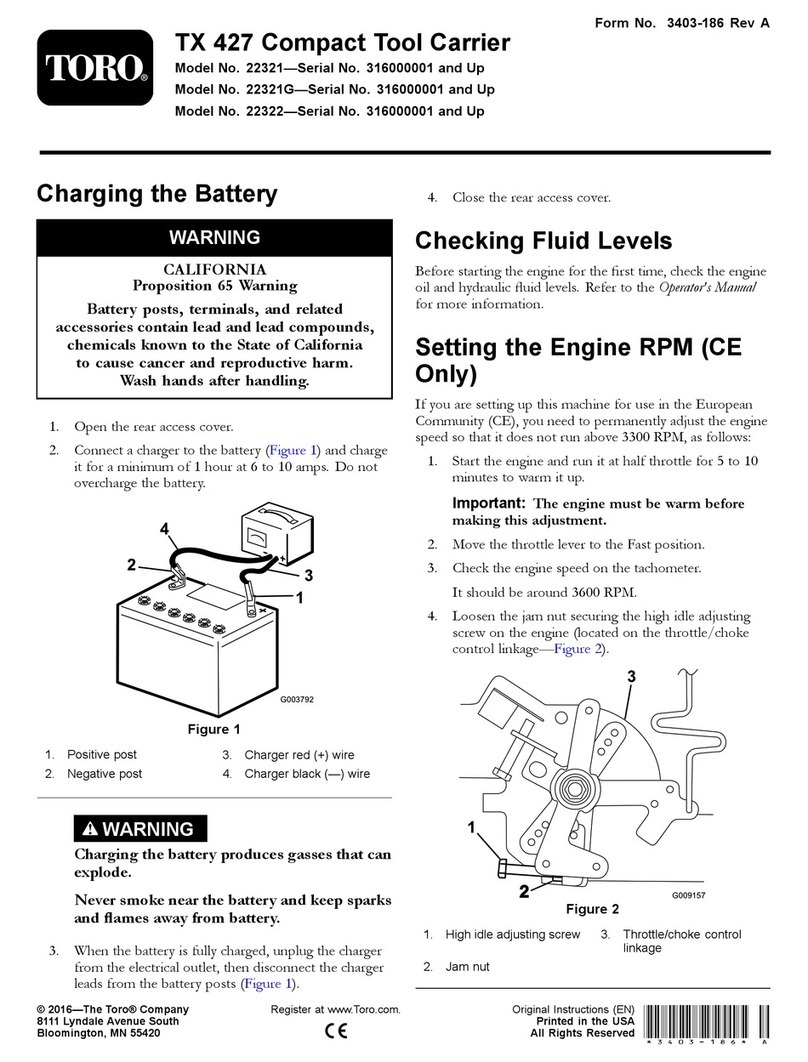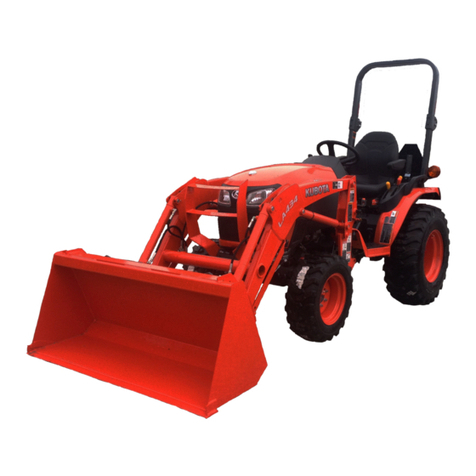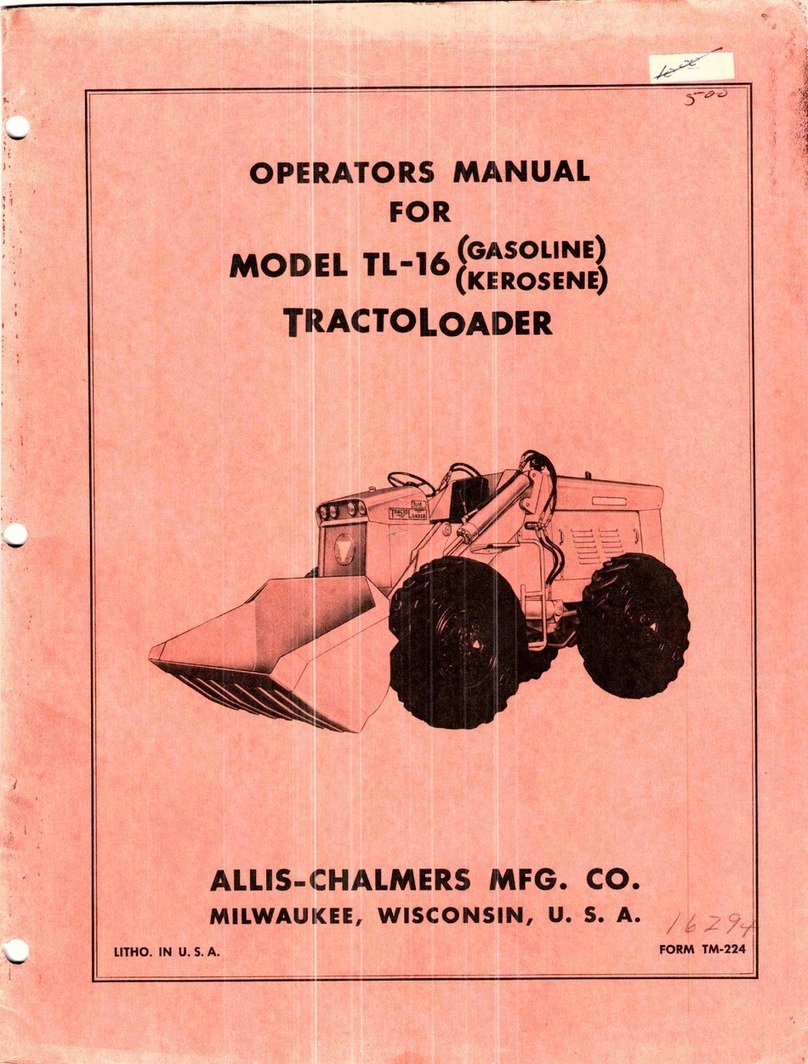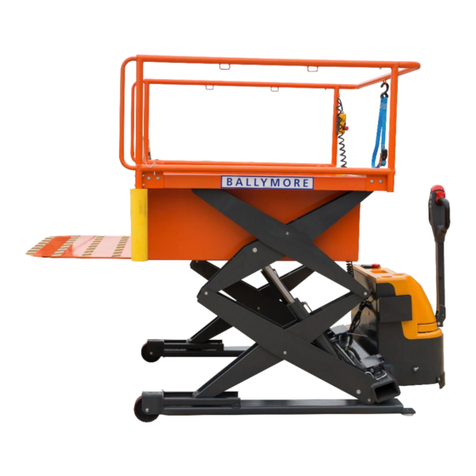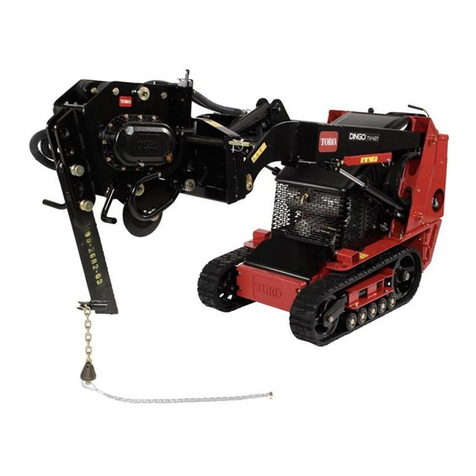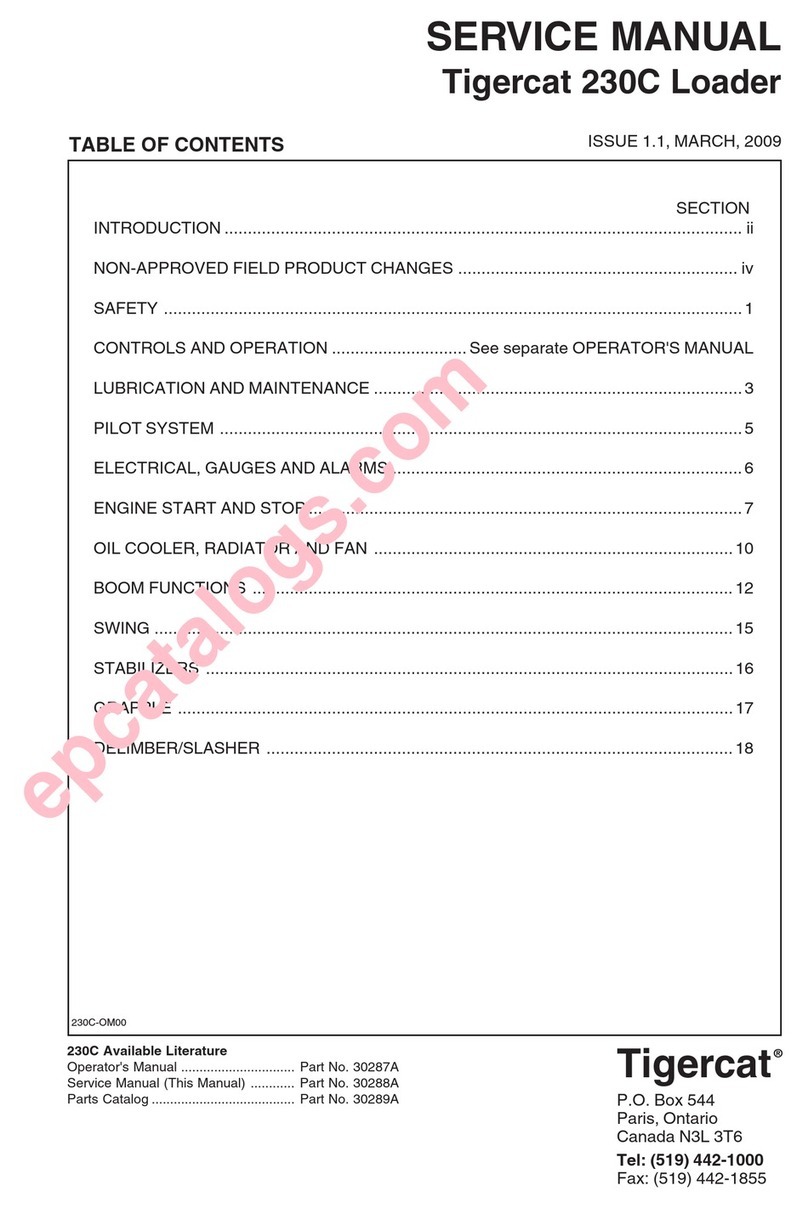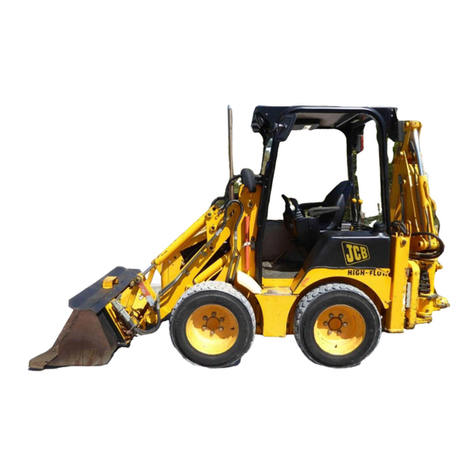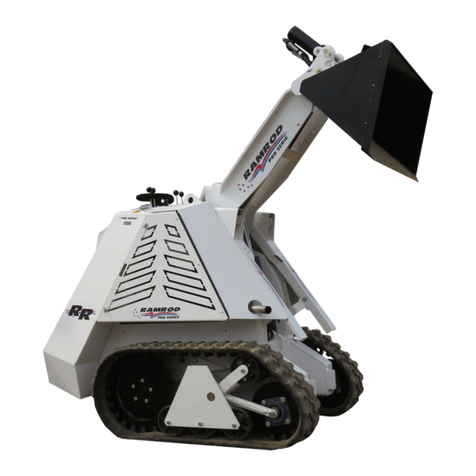
2 - 5
When taking unit out of extended storage:
1. Check for any damage or loose parts. Repair,
replace, or tighten hardware before operation,
especially blade attachment bolts.
2. If a preservative fluid was used in fuel tank, drain
and discard. Fill fuel tank with fresh new fuel.
2.9 SAFETY RULES
Walk Around Inspection
Complete a walk around inspection of unit and work
area to understand:
• Work area.
• Your unit.
• All safety decals.
Work Area
ALWAYS check overhead and side clearances carefully
before operation. ALWAYS be aware of traffic when
operating along streets or curbs.
ALWAYS keep hands and feet within the limits of the
unit.
Keep children, people, and animals away. Keep
children out of work area and under watchful care of a
responsible adult.
Keep area of operation clear of all toys, pets, and
debris. Objects can cause vehicle instability and injury.
Check for weak spots on dock, ramps or floors. Avoid
uneven work areas and rough terrain. Stay alert for
hidden hazards.
DO NOT run engine in an enclosed area. Always
provide good ventilation.
Mark and know location of all utility lines before
operation. Always check with local utilities before
digging.
Unit
ALWAYS keep protective structures, guards, and
panels in good repair, in place and securely fastened.
NEVER modify or remove safety devices.
Check Safety Interlock System for proper operation
daily (see Operation section). Do not operate unless
system operates properly.
Operation
Understand:
• How to operate all controls
• The functions of all controls
• How to STOP in an Emergency
• Speed ranges
Do not operate any of the control levers or auxiliary
power take-off unless both feet are standing on the
platform.
Before starting engine, disengage auxiliary power.
DO NOT travel at too fast a rate. DO NOT change
engine governor settings or over-speed engine.
Always back up slowly. Always look down and behind
before and while backing.
Never leave a running unit unattended. ALWAYS shut
off auxiliary power, lower throttle setting, and stop
engine before leaving unit. ALWAYS remove key to
prevent unauthorized use.
Never carry passengers on any part of unit.
Avoid uneven and rough terrain. DO NOT operate near
drop offs, ditches, or embankments. Unit can suddenly
turn over if a wheel is over the edge of a cliff or ditch, or
if an edge caves in.
Check the capacity of the attachment in use.
Exceeding this limit may cause instability.
If tires lose traction, turn off auxiliary power and
proceed slowly straight down slope. Avoid wet
surfaces.
Avoid parking on a slope. If necessary, use wheel
chocks.
DO NOT leave unit unattended on a slope ALWAYS
use wheel chocks when leaving unit.
ALWAYS operate unit with good visibility and light.
Fuel is highly flammable and its vapors can explode.
Use ONLY approved fuel containers.
NO Smoking!
NO Sparks!
NO Flames!
Allow engine to cool before servicing.
NEVER fill fuel tank when engine is running, hot, or
unit is indoors.
Abnormal Vibrations are a warning of trouble. Striking a
foreign object can damage unit. Lower attachment,
immediately stop unit and engine. Remove key and
wait for all moving parts to stop. Remove wire from
spark plug. Inspect unit and make any necessary
repairs before restart.
Hazardous Slopes
DO NOT operate on steep slopes. Avoid operating on
slopes. When you must operate on a slope, travel up
and down the slope. Never operate cross a slope. With
a loaded bucket, operate with the bucket uphill. With an
unloaded bucket, operate with the bucket down hill.
Always move the vehicle with the lift arms in its lowest
operating position. Never operate on a slope greater
than 10 degrees.
Child Safety
NEVER allow children to operate or play on or near
unit. Be alert and shut off unit if children enter area.
Personal Safety
Read and obey all warning, caution, and instructions
on the unit and in provided manuals.
• Only trained adults may operate unit.

